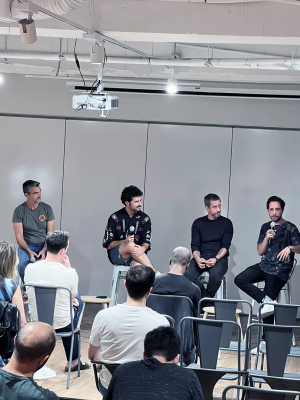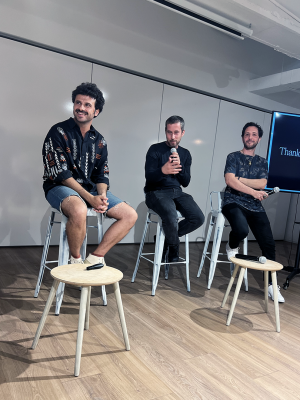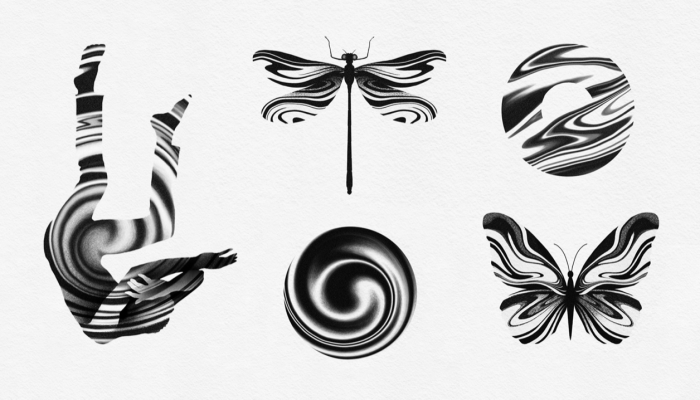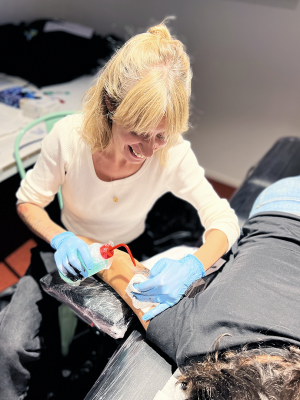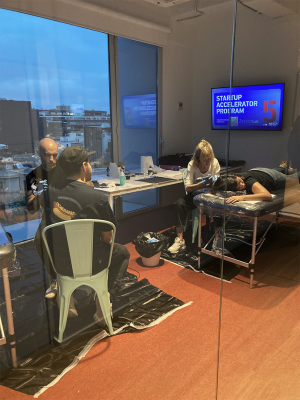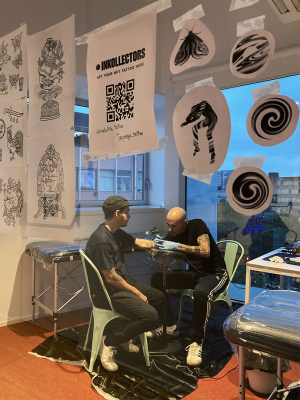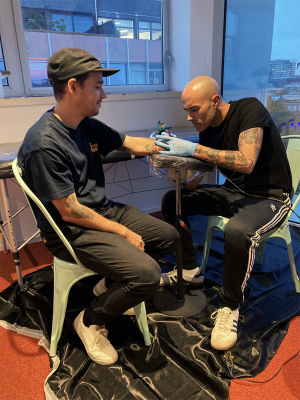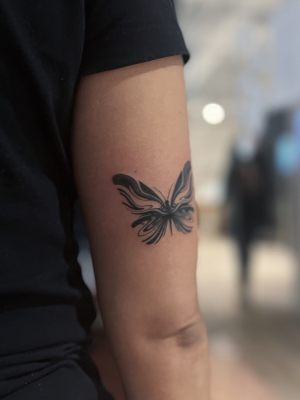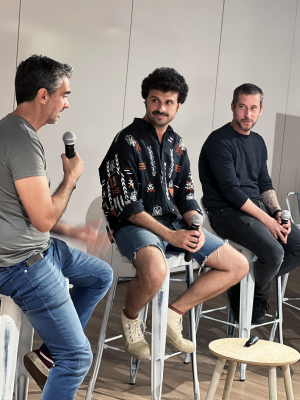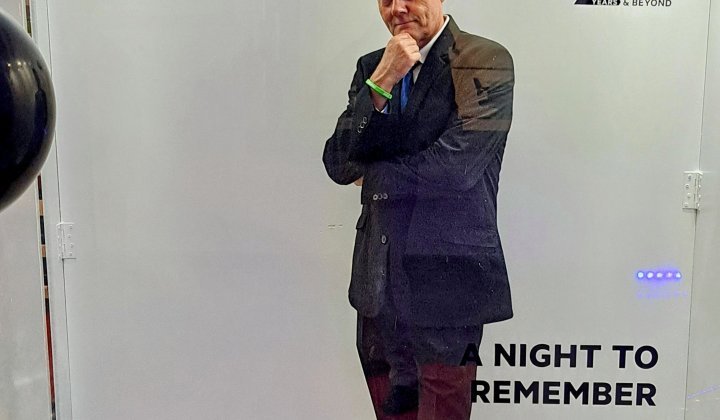The term "metaverse" traces its roots to Snow Crash, a Neal Stephenson novel from 1992. But defining exactly what it means today is complicated.
“It’s all very abstract,” says Lucas Guzman, founder of Lovekravt, a company that builds Web3 applications. “Clients come to me and ask: what’s the next big thing we can invest in? They have this budget to create something or sometimes they just want something new, whatever the hype is. It used to be virtual reality, then it was augmented reality, and then it was NFTs. Now they’re talking about AI and the metaverse. So it’s constantly moving [and] pushing the boundaries of what we can offer.”
Part of the confusion is because many people think that the metaverse is just one platform created and owned by the company previously known as Facebook. But that’s like saying “social media” is a single start-up instead of recognising that there are many different platforms beneath the broad umbrella of that term and that the whole thing won’t collapse if one of them doesn’t survive (remember MySpace, anyone?).
“Depending on who you talk to about the metaverse, most people don’t know,” says Cai Felip, co-founder and CEO of Union Avatars, a company that offers tools to help users manage their digital identities. “So I think we’re still in the early stages of the metaverse, like it was with cyberspace.”
The metaverse can connect the offline and online worlds
The fact that it’s so new is why many platforms are replicating the real world in limiting ways. For example, people shop online to avoid long queues or going all the way to a store only to find an item out of stock. And yet many current metaverse shopping experiences require users to put on a headset, open an application, and walk through a virtual store – not the kind of thing you can do when you only have five minutes to spare.
Another limitation is monetary. “Some big retail companies and brands believe that if people spend a lot of time in the metaverse they will of course buy clothes in the metaverse,” says Alex Puig, founder and CTO of Caelum Labs, a company on a mission to create better organisations using decentralised technologies. “But your budget is limited. So you’re not going spend €100 in real life and €100 in the metaverse. Instead, it will be 50/50.”
This is where brands can get creative. For example, many young people are so used to living their lives online that they might find it frustrating that buying something in the real world doesn’t come with a digital copy or vice versa. The metaverse could bring the two worlds together.
“Maybe you’re able to buy real shoes that also come with a digital pair that you can use in the metaverse,” Felip says. “And maybe those digital shoes will have a gamification layer that makes you run faster or jump higher… People are spending a lot in customisations for their avatars so there’s money there.”
The risk of fraud is real
The fact that there’s money to be made is making brands desperate to cash in on the hype. Guzman speaks of an unnamed client who wanted to hire him to create their own metaverse (“which is a gargantuan task”) but who admitted that they just wanted to make money and would do “whatever it takes”.
“Those are the kinds of projects that I reject,” he says. “But I still love to connect with brands that want to experiment and take the time to analyse what’s happening. Do we want to reach a younger audience because that’s what’s happening at the moment? Do we want to plan for five to ten years from now? That’s a brilliant way for fashion companies to get in.”
One risk is that people could end up selling fake products in the metaverse, which might not be as easy to identify as cheap knockoffs in the real world. Add to this the trend for social engineering and targeted phishing attacks, and hackers could have a much easier way to defraud you without much technical know-how on their part.
“There will always be bad actors [because] technology goes super-fast but human behaviour does not,” Guzman says. “Not everybody is computer-savvy, so they can make mistakes. I speak from my own experience because I’ve been scammed. And there’s no company I can go to and complain and ask for my money back.”
The metaverse can be an extension of the real world
With so many platforms building independently, there isn’t much interoperability. But Felip believes that there’ll come a point when the market decides on a common protocol that everyone follows.
“One of the interesting points I see is through metadata,” he says. “For example, you might have an NFT with metadata that says blue shoes. And then, depending on where you go, each platform interprets this in their own style.”
Although some might feel that escaping to an inauthentic and intangible metaverse is going to make us even more isolated than social media did, Felip sees it as an extension of the “beautiful, real, and connected world”.
Guzman agrees. “I love the idea of uncharted space,” he says. “And I feel like it could add a lot of social health, especially when it’s smarter. But it’s an experiment. So let’s risk it together and see what happens.”
Will the Metaverse Last?
Famed economist Johan Maynard Keynes once quipped that in the long run we’re all dead. Now many are wondering if the metaverse will die first. But even though usage numbers are small, the fact that the interest is driven by Gen Z means that there might be a future after all.
“The people spending a lot of time digitally are still kids,” Guzman says. “And they will be the ones consuming and buying our products in ten years… I'm not saying that we’re going to spend 24 hours a day there. But it’s going to be an interesting experience.”
What these youngsters want is freedom to change their styles. This could mean having a photorealistic avatar for virtual work meetings or job interviews and something non-human for when they’re playing online games or just hanging out with friends. The problem is that too many metaverse experiences aren’t embracing all the possibilities.
“Why are we trying to copy the real world in the metaverse?” Puig asks. “The metaverse is huge. There’s no limit. But the first thing we do is make it small so we can sell things… I don’t see why we are making the same mistakes when we have a leaderless world and are free to build everything from scratch.”
Guzman, who loves the idea that “everybody will have an option to be whatever they want”, agrees. The clients he works with don’t just want to deploy traditional advertising in virtual stores. Instead, they’re thinking about ideas like branded characters with custom voiceovers that walk visitors through a bespoke storyline, tailormade from start to end.
“We shouldn’t copy/paste things that are happening in daily life that we don’t like,” he says. “We should create new experiences. And the good thing is that we have lots of game developers that have already experimented with crazy physics and community challenges that can be inserted into the metaverse. They can accomplish that because technology is there.”
Get Inked
In many cultures, tattoos are a sign of status. In the metaverse, it can be the same and so much more.
“My wife is a tattoo artist and designer,” says Xavi Cussó, creator of INKollectors, a company that creates tattoos for avatars. “We don’t have a big community yet but we see an opportunity for artists to get more equal rights and earn money from their designs.”
Creating tattoos for avatars opens up new possibilities. Unlike in the real world, the designs don’t have to be static or flat. Instead, they could be animated or in 3D. This adds a new layer of complexity and is why the company has high standards for its designs.
“Quality comes first so our priority is to only have and feature professional tattoo artists,” he says. “And even though I’m not a tattoo artist, I know that it’s not just about creating an illustration. It needs to adapt to your body.”
Indeed, there’s scope to take these tattoos (packaged as NFTs from which artists earn revenue) and also have them inked on real people in the real world. But just like there’s nothing stopping anyone from copying a design online, it’s hard to police what people do with their own skin.
“We could always use intellectual property to register our designs but it can happen already in real life that people copy tattoos,” he says. “So unless you protect them through lawyers, there will always be this problem.”
The company has long-term plans to collaborate with Web3 companies through brand partnerships that will eventually expand to include video game characters and animated films. But it’s about more than just getting on board the hype train.
“I don’t just want to jump onto the metaverse thing,” he says. “Because if you do so without a solid strategy that adds some value, even if it's for gaming or entertainment, the project is going nowhere.”
Ultimately, the company sees tattoos and digital art as speaking to a deeper issue of our identity. Much like how we change our clothes or hair to reflect the different aspects of our personalities, changing our tattoos to something new every day could allow us to express more fully who we are.
“I know it’s niche but it’s not a project based on speculation,” he says. “It’s not for everybody of course; that’s perfectly fine. But there are a lot of creative opportunities.”



